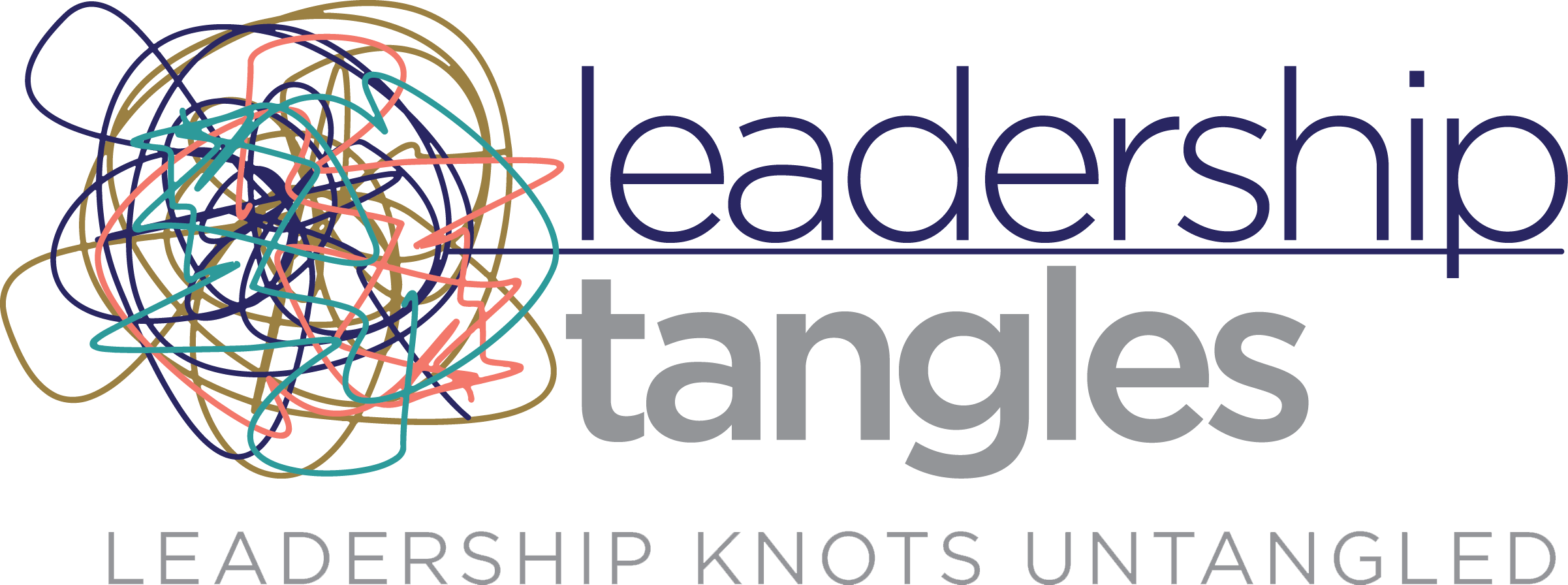
Both of us are keenly aware of leaders' need to dramatically increase their capacity for complexity. We have invested significant time researching, studying, and teaching leading-edge theories and practices that facilitate more strategic thinking. We’ve also coached leaders facing VUCA–volatility, uncertainty, complexity, and ambiguity, and consulted with global organizations facing unprecedented change. We want to share our thoughts and pragmatic recommendations.
Leaders Overwhelmed
A constant refrain from public sector leaders at all levels is that they are over their heads when dealing with volatility, uncertainty, complexity, and ambiguity beyond imagination. That, coupled with the post-pandemic, there is significant disagreement about how to deal with what is going on and what should happen. This has resulted in today’s leaders feeling overwhelming cognitive and emotional stress and facing the mental and physical challenges of running faster and faster on a 24/7 treadmill. In short, they are often on the verge of, or in a state of, emotional and physical burnout.
The shift from working remotely for three-plus years led to even more dispersed workforces. Leaders struggled with engaging employees as the loss of social connection created its own complex challenges. Leaders realize that a hybrid work model may be here to stay and are unsure how best to motivate and inspire workers.
The old axiom of doing more with less has taken on new meaning today. Leadership teams are hunkering down and looking for ways to trim costs while simultaneously being impacted by disruptive technologies. Artificial intelligence (AI), in particular, threatens the core of many organizations' operations.
The Cynefin Framework: A Useful Model for Complex Times
The Cynefin framework is beneficial for discussing today’s world. Jennifer Garvey Berger has a YouTube video that does a brilliant job of explaining the Cynefin framework.
The Cynefin framework is helpful for:
- Understanding the difference between the predictable and the unpredictable world,
- Making the case that problems in the unpredictable world are fundamentally different from those in the predictable world
- Laying the foundation for approaches leaders can take when things are unpredictable.
Leadership would be a safe undertaking if organizations only faced problems with known solutions resolved by applying authoritative expertise and the organization’s current structures, procedures, and ways of doing things. Increasingly, in a complex world, leaders face what is known as adaptive challenges.
Adaptive challenges cannot be dealt with by following established knowledge, proven guidelines, and methods known to experts. The necessary knowledge to respond to adaptive challenges does not yet exist. They cannot be solved by someone who provides answers from on high, the boss who has all the correct answers. In an increasingly VUCA world, top-down transactional relationships must be replaced by relationships that thrive in a high openness and trust group culture.
Yesterday’s Mind
What we are describing highlights a significant challenge–the challenge is what we have called “Yesterday’s Mind.” Let’s explain what we mean.
First, we are descendants of men and women who lived in caves about 2.5 million years ago. To survive, they needed to be smart. If they were outside the cave and heard something and didn’t move, chances are they were lunch or dinner for a saber-tooth tiger. Their gene pool ended there. On the other hand, our ancestors were smart enough to trust their primal instincts and flee. Living in a tribe was helpful because they learned from others what they needed to do to be safe.
Over the millennia, our brains evolved, although ever so slowly. As our tools and hand-eye coordination evolved, so did our brains. Yet, as modern neuroscientists assert, our brain is still primarily wired for safety. We have five times as many circuits that detect threats than rewards. We pick up threats in 1/5 of one second. And, when we feel threatened, we are less productive, more easily distracted, more autocratic, and less flexible in our decision-making. It’s harder to listen and learn, and, often, nonconsciously, we rely on old habits, i.e., cognitive shortcuts. We function primarily on autopilot because our brains have evolved to create as many habits as possible to save effort. Just think about all of the tasks you perform daily without having to think about it.
When operating on autopilot, we don’t use as much energy. Operating out of our conscious mind is energy-intensive. When we encounter something new, or something changes, our brain needs to switch to the executive function, which takes a lot of cognitive energy. For example, think back to when you first learned to drive. You had to have intense focus to stay safe. Soon, we guess you could drive without thinking about every move. Driving became a habit.
Our Nervous System
Given our increasingly complex environment, it is essential to have what Jennifer Garvey Berger and Carolyn Coughlin call a complexity-fit nervous system. Our nervous system includes our brain, spinal cord, and a complex network of nerves. It sends messages to our body in two phases: the sympathetic and parasympathetic nervous systems.
The sympathetic nervous system mobilizes the energy in our body in stressful situations and prepares us to fight or flee. Even when the threat is not physical, for instance, when faced with an overwhelming and complex situation, we can have a physical reaction. Our heart pumps faster, our stomach churns, our palms sweat, and our muscles tighten. Cortisol is released to prepare us for danger and keep us alive. However, when constantly tense and stressed, cortisol can kill us.
The parasympathetic nervous system calms the body, conserving energy and returning it to homeostasis. When the parasympathetic nervous system is activated, our heart rate slows down, and our breath deepens and also slows down.
If you are starting to feel depressed, the good news is that our brains are plastic. That means we can learn strategies that activate our parasympathetic nervous system.
Recommendations for Increasing Our Capacity to Lead in Complexity
Leaders need three broad clusters of knowledge and skills to thrive in complexity: self-leadership, people leadership, and organizational leadership. Related to self-leadership, we like to say the inner drives the outer. The work is ever with ourselves. We must get our house in order before leading others. Concerning people leadership, the second cluster of knowledge and skills, we must approach how we lead differently in times of chaos and complexity. Regarding the third and final cluster of knowledge and skills, organizational leadership, today’s leaders need to be system-wise.
This blog post covers self-leadership. Watch for two other posts, one on people leadership and another on organizational leadership.
Self-Leadership
Garvey-Berger and Coughlin write about the importance of connection in an overwhelming and complex situation. They remind us that we are social beings. Dr. James Coan, a professor and researcher at the University of Virginia, coined “Social baseline theory.” Dr. Coan put people in fMRI with the threat of receiving an electric shock to measure the effect on the brain. He then wondered what the difference would be if someone you trust is holding your hand. In one study, he recruited 16 married women. He first told them they would receive an electric shock and measured both the subjective and neural responses. He then had them bring their husbands to hold their hands during the experiment. He also had them hold the hand of a stranger. His research suggests that the body responds to social resources and is less responsive to pain. When holding their husband’s hands, especially when the marriage was strong and trusted, the women’s subjective report of fear was less. There were also measurable differences in scans of their brains.
Social baseline theory also helps explain why we perceive walking up a steep hill with a heavy backpack as easier when walking with a friend. Our brains perceive social resources, such as a friend, as almost equivalent to the oxygen we need to breathe. Even when facing a hill with a friend, it seems less steep than when facing it alone.
One of us has a personal story to illustrate this phenomenon. While on a flight from San Francisco to Mexico City several years ago, we suddenly experienced tremendous turbulence. It felt like we were bobbing along in a pot of fast-boiling water. One of our friends was a flight attendant, and she was scared. One of us was sitting in the aisle seat, and a woman we didn’t know was sitting in the window seat. We asked if we could hold hands. We did, and we started talking. Even though the turbulence remained the same, it seemed much less severe with the social connection.
Sleep
Good sleep hygiene, as you all know, is essential. Science tells us that while we sleep, our brain prunes itself, eliminating extra neurons and synapses. This helps us be more effective daily and also as we age. When we get enough sleep, our memory recall is improved. We can better regulate our metabolism. While we sleep, we process what happens during our waking hours, which is useful in learning. We learned recently that even if you can't sleep, put down devices and stay in bed longer. Aiming for seven to eight hours of sleep is an excellent habit to develop and a good investment in increasing our ability to grasp complex situations.
Breathe
We take our breath wherever we go, a tool we often take for granted. Our breath helps us switch from our sympathetic to the parasympathetic nervous system. If our breathing is shallow, our sympathetic nervous system is likely activated.
One of us was taught several different ways to use the breath as an object of meditation. The simplest is just resting your attention lightly on the simple act of inhaling and exhaling. Because there is a natural split-second gap between inhalation and exhalation, you can also lightly focus on the three-part process of inhalation, exhalation, and the interval between. Repeat: inhale, exhale, and the interval or gap between.
Focusing on the breath is particularly useful when you feel stressed or distracted. Internally, drawing attention to your breath produces a state of calmness and awareness that allows you to step back from whatever problems you might face and respond to them more calmly and objectively. So, if you are stressed out, just breathe. Bring your attention to breathing. No one will notice that you’re meditating. They probably won’t even pay attention to the fact that you’re breathing at all. The key to success here is “short times, many times,” even two minutes a day will make a difference.
Be Present
Being present is the ground that makes deep connections and influencing others possible. When we are present, the boundaries between self and others dissolve. We can suspend our habitual thinking patterns and see freshly. Neuroscience teaches us that we are wired to function primarily on automatic pilot, which is the opposite of being fully present.
Summary
The three components of self-leadership that will increase your capacity for the complexity you encounter at work and home are connection, sleep, and breathing. How would you assess your complexity fitness? Do you have a solid social network? Are you practicing good sleep hygiene? Do you remember to breathe?
We hope we have stimulated your thinking about self-leadership. What one action can you commit to taking today to begin up-leveling your complexity fitness?
Stay tuned for our next blog post. We will cover people leadership and its importance in increasing your capacity for complexity.



.jpg?width=269&height=253&name=Marcia%20Ruben%20t_prv_lo_res%20(2).jpg)